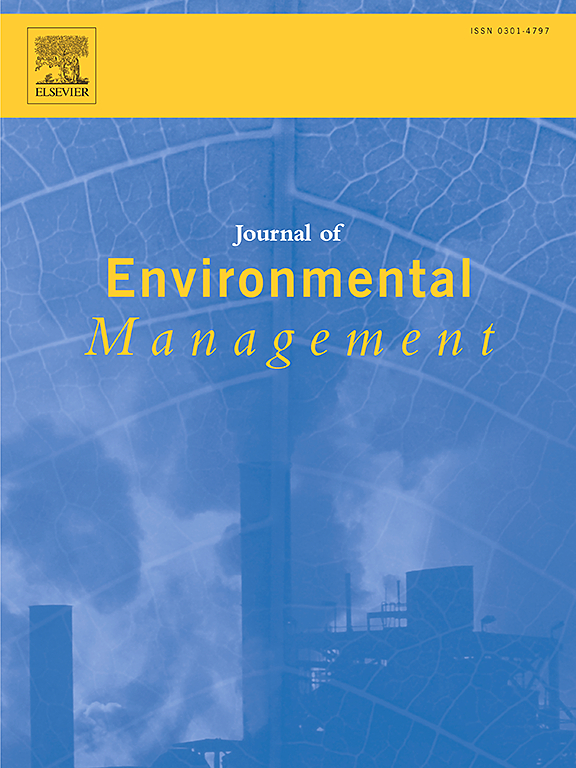长期施氮减少了中国西南紫色土壤中的矿物相关有机碳,同时增加了颗粒有机碳
IF 8
2区 环境科学与生态学
Q1 ENVIRONMENTAL SCIENCES
引用次数: 0
摘要
近年来,人为活动增加了陆地生态系统的氮输入量,对土壤有机碳(SOC)的固存产生了深远影响。然而,氮影响矿物相关有机碳(MAOC)和颗粒有机碳(POC)的潜在机制仍不清楚。为了填补这一空白,我们在玉米农业生态系统中进行了一项为期 12 年的田间试验,连续施用氮(0、90、180、270 和 360 千克/公顷-1)。我们评估了植物生物量(产量、秸秆和根生物量)、微生物特性(酶活性、生物量和多样性)、土壤化学(pH 值、氮的可用性和碱式离子)、矿物学(氧化物和硅酸盐)和 SOC 分馏,以阐明影响 MAOC 和 POC 的主要控制机制。研究结果表明,施用氮能使 SOC 和 POC 分别增加 6.56%-10.4% 和 43.1%-54.0%,但 MAOC 却减少了 7.31%-17.1%。施氮增加了植物生物量,但降低了土壤 pH 值(pH 值从 6.7 降至 5.6)、碱离子浓度(K⁺、Na⁺、Ca2⁺、Mg2⁺)、无定形氧化物和伊利石含量。偏最小二乘路径模型(PLS-PM)和相关性分析表明,施用氮能提高根系生物量,同时增加微生物分解,最终它们的共同作用增加了 POC。MAOC 下降的主要原因是土壤酸化减少了微生物残留物的 C 输入,改变了矿物质组成,削弱了矿物质保护 SOC 的能力。因此,我们的研究表明,添加氮主要是通过提高根系生物量来增加 POC,而通过减少微生物生物量和削弱矿物质保护来降低 MAOC。这些见解加深了人们对农业生态系统中SOC组分动态响应氮输入的机制的理解。本文章由计算机程序翻译,如有差异,请以英文原文为准。
Long-term nitrogen application decreased mineral-associated organic carbon while increasing particulate organic carbon in purple soil in southwest China
In recent years, anthropogenic activities have increased nitrogen (N) input into terrestrial ecosystems, profoundly impacting soil organic carbon (SOC) sequestration. However, the potential mechanisms through which N affects mineral-associated organic carbon (MAOC) and particulate organic carbon (POC) remain unclear. To address this gap, we conducted a 12-year field trial applying continuous N application (0, 90, 180, 270, and 360 kg N·ha−1) in a maize agro-ecosystem. We assessed plant biomass (yield, straw, and root biomass), microbial properties (enzyme activity, biomass, and diversity), soil chemistry (pH, N availability, and base ions), mineralogy (oxides and silicates), and SOC fractions to elucidate the primary control mechanisms influencing MAOC and POC. Our findings showed that N application increased SOC and POC by 6.56%–10.4% and 43.1%–54.0%, respectively, but decreased MAOC by 7.31%–17.1%. And N application increased plant biomass, but decreased soil pH (pH from 6.7 to 5.6), base ion concentrations (K⁺, Na⁺, Ca2⁺, Mg2⁺), amorphous oxides, and illite content. Partial least squares path model (PLS-PM) and correlation analyses indicated that N application enhances root biomass while increasing microbial decomposition, and ultimately their combined effect increased POC. The decline in MAOC is primarily attributed to soil acidification decreasing the C input from microbial residues, altering mineral composition and diminishing the minerals' capacity to protect SOC. Thus, our study demonstrates that N addition predominantly increases POC through enhanced root biomass, while reducing MAOC by decreasing microbial biomass and weakening mineral protection. These insights provide a deeper understanding of the mechanisms governing SOC fraction dynamics in answer to N inputs in agroecosystems.
求助全文
通过发布文献求助,成功后即可免费获取论文全文。
去求助
来源期刊

Journal of Environmental Management
环境科学-环境科学
CiteScore
13.70
自引率
5.70%
发文量
2477
审稿时长
84 days
期刊介绍:
The Journal of Environmental Management is a journal for the publication of peer reviewed, original research for all aspects of management and the managed use of the environment, both natural and man-made.Critical review articles are also welcome; submission of these is strongly encouraged.
 求助内容:
求助内容: 应助结果提醒方式:
应助结果提醒方式:


